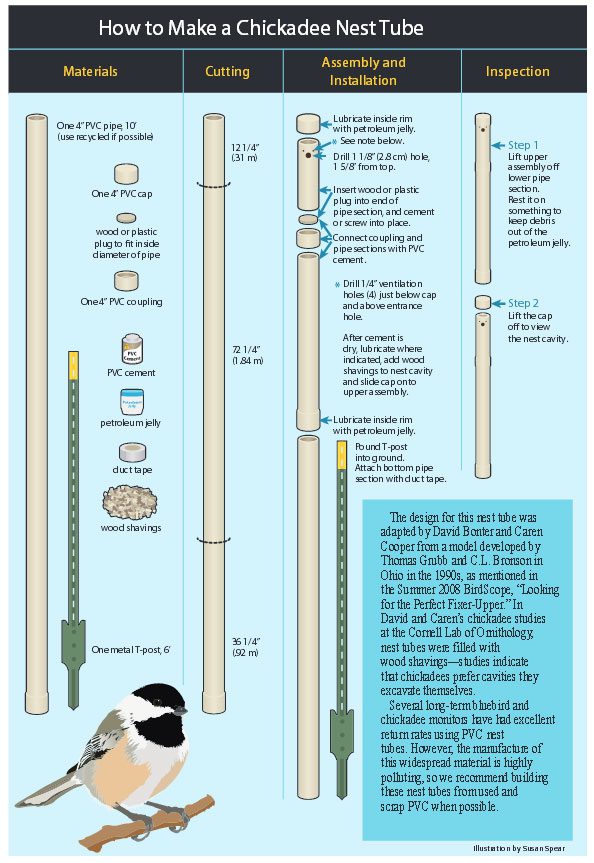You Asked For It: How to Make a Chickadee Nest Tube
Illustration by Susan Spear
January 15, 2009The design for this nest tube was adapted by David Bonter and Caren Cooper from a model developed by Thomas Grubb and C.L. Bronson in Ohio in the 1990s, as mentioned in the Summer 2008 BirdScope article, Looking for the Perfect Fixer-Upper. In David and Caren’s chickadee studies at the Cornell Lab of Ornithology, nest tubes were filled with wood shavings—studies indicate that chickadees prefer cavities they excavate themselves.
Several long-term bluebird and chickadee monitors have had excellent return rates using PVC nest tubes. However, the manufacture of this widespread material is highly polluting, so we recommend building these nest tubes from used and scrap PVC when possible.
Where should you place your chickadee nest tube?
Setting out a nest tube, like any other nest box, is not guaranteed to attract nesting chickadees. Where should you place yours to improve your chances?
David Bonter notes that these tubes are very successful at attracting House Wrens as well as chickadees. To discourage wrens, the tubes should be placed at least 60 feet into a wooded area. Placing the tube along a wooded edge of a field or lawn will make them much more attractive to House Wrens. The compass orientation of the entrance hole probably does not matter at all, but chickadees do seem to prefer an unobstructed path to the entrance hole, without branches and leaves in the way. Caren Cooper suggests that the farther the artificial snag from other trees and branches, the less likely it will be for squirrels and mice to jump to it.
Caren also emphasizes that habitat type matters. For example, placing a nest tube in a coniferous forest stand that does not have chickadees is unlikely to lure them in. Ideally, these nest tubes should be placed where chickadees are fairly easily found in the first place—usually in deciduous or mixed woods.
Originally published in the January 2009 issue of BirdScope.

All About Birds
is a free resource
Available for everyone,
funded by donors like you
American Kestrel by Blair Dudeck / Macaulay Library

